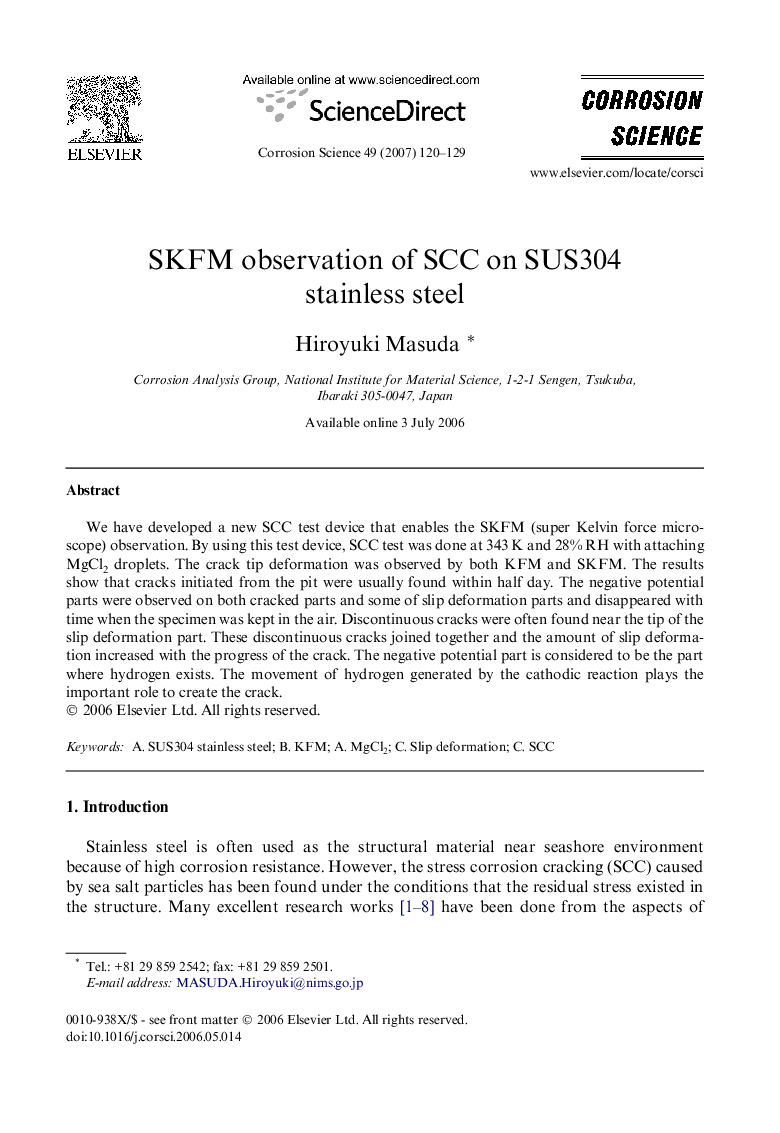| Article ID | Journal | Published Year | Pages | File Type |
|---|---|---|---|---|
| 1472157 | Corrosion Science | 2007 | 10 Pages |
We have developed a new SCC test device that enables the SKFM (super Kelvin force microscope) observation. By using this test device, SCC test was done at 343 K and 28% RH with attaching MgCl2 droplets. The crack tip deformation was observed by both KFM and SKFM. The results show that cracks initiated from the pit were usually found within half day. The negative potential parts were observed on both cracked parts and some of slip deformation parts and disappeared with time when the specimen was kept in the air. Discontinuous cracks were often found near the tip of the slip deformation part. These discontinuous cracks joined together and the amount of slip deformation increased with the progress of the crack. The negative potential part is considered to be the part where hydrogen exists. The movement of hydrogen generated by the cathodic reaction plays the important role to create the crack.
